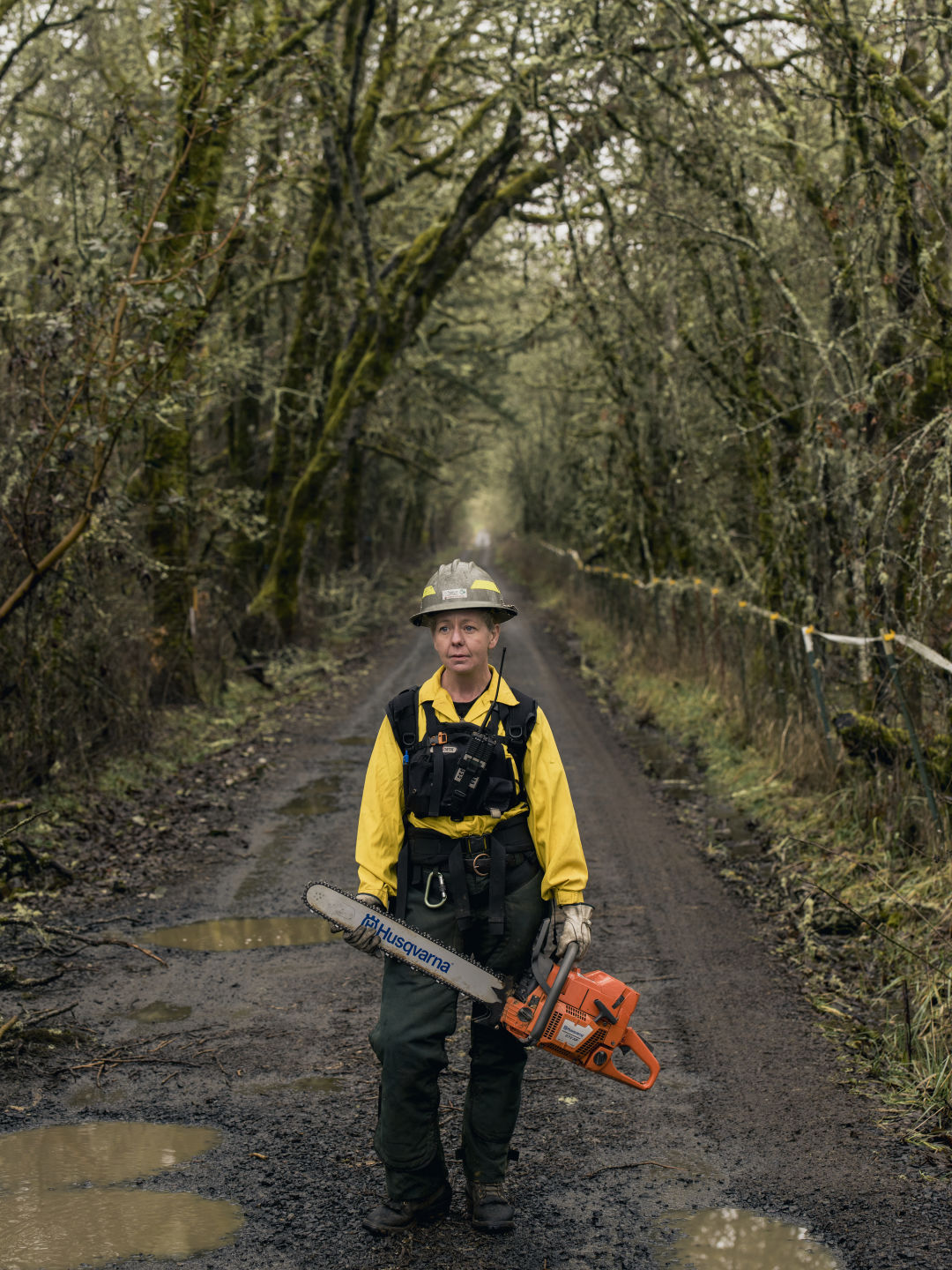Woman on Fire

Image: Justin Kaneps
When most people picture wildland firefighters, they visualize heroic-looking men with sooty faces and sweaty brows. But when I think of wildland firefighters, I see people of all genders in that group. I think of my role models--the women I knew in the late 90’s who worked on summer fire crews in Eugene. They had strong biceps and wore sturdy boots and projected an easy confidence that I couldn’t help but admire.
Inspired by these women, I joined a 20-person fire crew based in Springfield in 1999 and began my career in wildfire management. I didn’t realize then the extent to which the male-dominated culture of firefighting worked to exclude women like me, but it didn’t take long. I went on to fight fire across the Pacific Northwest, eventually founding the Oregon Prescribed Fire Council and joining the Nature Conservancy in 2015 as a fire manager for Washington and Oregon. Though there are more women working in fire management now than in the 90’s, the number of men and women in the field is still not in balance.
Our Forests Need Fire
Unfortunately, the same can be said for fire itself. The Oregon landscape has been shaped by the effects of fire over thousands of years. Low-intensity wildfires occurred regularly. Indigenous people, women in particular, used fire to shape the ecology of the land. Countless plants and animals still depend on the recycled nutrients and healthy ecosystems that wildfires produce.
But after more than a century of excluding fire from the landscape, our western dry forests are now dangerously overgrown with vegetation that regular burning once kept in check. Now, paired with hotter, drier temperatures due to climate change, this dangerous imbalance is leading to larger, more intense wildfires.
We decided long ago that fire was something to be brought into submission, rather than recognized for its contributions. This mirrored the ways in which I found myself being treated as a female firefighter. My desire to change both of these things led me to focus on returning fire to the landscape while finding ways to help other women succeed in those efforts.
Controlled Burns Reduce the Risk of Catastrophic Wildfire
The science is clear that controlled burning plays an essential role in restoring Oregon’s dry forests. By restoring fire’s natural role in the forest — instead of excluding it — we can improve habitats for plants and animals and reduce the risk of catastrophic wildfires.
The social science is also clear—diversity and inclusion creates a broader range of knowledge, skills and abilities that lead to different outcomes and better practices. Including all genders in the fire service provides more options for dealing with the increasingly complex challenges that fire managers face. I’m proud that my work with The Nature Conservancy is helping bring balance to both our forests and to the fire service while working to reduce the risk of catastrophic wildfire in Oregon and beyond.
